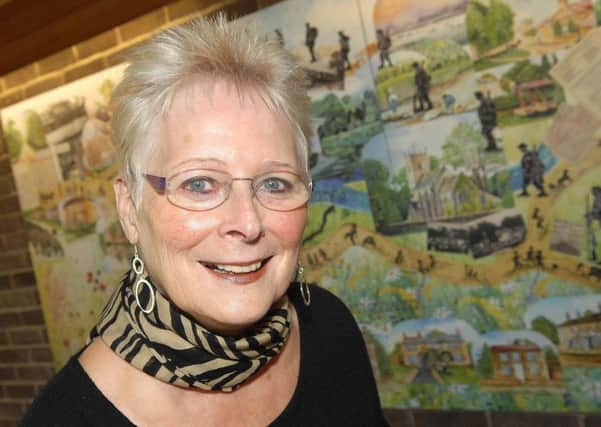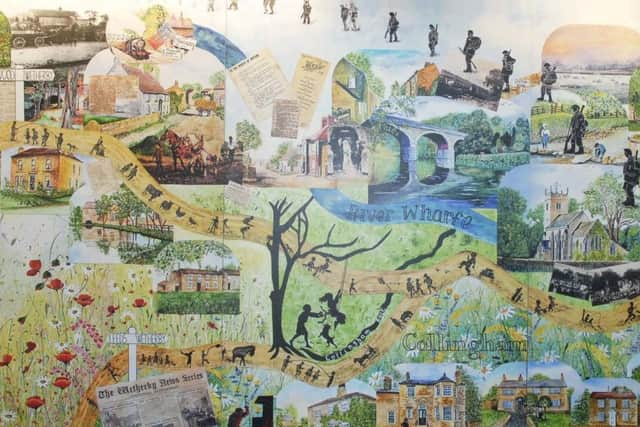Collingham mural sets scene


Artist Jill Neale has used watercolour to depict village life in 1918, including houses, farms and children playing games.
“There are a number of soldiers leaving the village, these represent the 21 soldiers from both villages who went to war and died,” said Jill.
Advertisement
Hide AdAdvertisement
Hide Ad“It has been a great joy to do and hopefully it will create much interest to people as time goes on.”


The mural, which took about a year to complete, is part of Collingham and Linton Remembers to commemorate 100 years since the end of World War One.
Project spokesman Diana Lee said: “The names of the 16 men from the village who lost their lives in WW1 have been listed in the parish church of St Oswald’s and in the Memorial Hall for the last 100 years – but are largely unnoticed by present day users.
“This all changed last year when four people looked at the War Memorial and asked Who? Why? What of their families? – and a project was born.”
Advertisement
Hide AdAdvertisement
Hide AdAlan Berry researched the military histories, firstly of the 16 men on the war memorial but then of all the men and women who are known to have left the village to take part in the war effort.
“Statistics show that there were around 187 men of fighting age in the villages at the outbreak of war, of which 150 left the villages to serve,” added Diana.
“Many extraordinary stories of bravery, tragedy and family love have been unearthed, including stories of the death of two brothers from each of two local families; death of husband and brother within months, leaving a young mother to raise her little girl; heroism and decoration at Galipoli. Research has found eight additional men from the villages who gave their lives.”
The Collingham and Linton Remembers project immediately caught the imagination of the village explained Dianna.
Advertisement
Hide AdAdvertisement
Hide AdAn investigation into the 125 homes in Collingham and 35 in Linton in 1911, sparked interest in current inhabitants wanting to know the history of the people who lived there during World War One.
“A plaque was created for anyone who wanted to display their homes history, and the Blue Plaque Heritage Trail of over 100 plaques was created,” added Diana.
“They record residents ranging from the Gunter family at Wetherby Grange to the most humble of farm workers housed in back-to-back cottages on School Lane.”
Other events have included illustrated talks by local historians shared local history and revealed life in a rural community at that time.
Advertisement
Hide AdAdvertisement
Hide AdKatherine Southby co-ordinated the newly created Pop-Up Cinema which showed related films in the Methodist Hall once a month.
Children made Princess Mary tins of WW1 treats and learned how the Princess Royal, who later in life lived at Harewood House, arranged for these to be sent to all serving men and women.
Collingham Scouts held a WW1 Scout Camp, 1914 style which brought the era to life for the children of the village.
In order to embrace as many people as possible in this project Janet Gregson introduced her plan to have 5,000 knitted poppies to create an eye catching display for the final week of Remembrance in November.